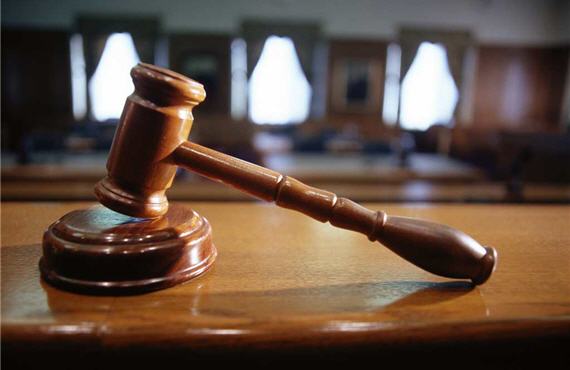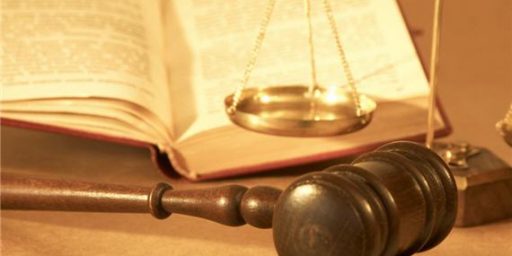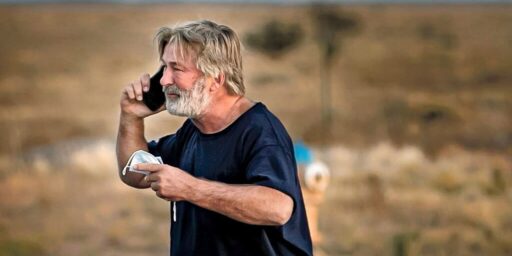Italian Seismologists Cleared Of Manslaughter Charges Related To 2009 Earthquake
In the wake of a 2009 earthquake that registered 6.3 on the Richter scale and resulted in death of some 300 people in the town of L’Aquila, a group of Italian seismologists were charged with, and later convicted of, manslaughter for allegedly failing to effectively warn the community of the danger of a coming quake. As I noted at the time, both the charges and the conviction seemed absurd and counterproductive on their face given both the often imprecise nature of earthquake predictions and the fact that prosecuting scientists in circumstances like this would likely set up perverse incentives for the future that would just harm the public. Two years later, then, it’s good to see that the seismologists have been cleared of the charges against them:
Six seismologists accused of misleading the public about the risk of an earthquake in Italy were cleared of manslaughter on 10 November. An appeals court overturned their six-year prison sentences and reduced to two years the sentence for a government official who had been convicted with them.
The magnitude-6.3 earthquake struck the historic town of L’Aquila in the early hours of 6 April 2009, killing more than 300 people.
The finding by a three-judge appeals court prompted many L’Aquila citizens who were waiting outside the courtroom to react with rage, shouting “shame” and saying that the Italian state had just acquitted itself, local media reported. But it comes as a relief to scientists around the world who had been following the unprecedented case with alarm.
“We don’t want to have to be worried about the possibility of being prosecuted if we give advice on earthquakes,” says seismologist Ian Main of the University of Edinburgh, UK. “That would discourage giving honest opinion.”
The defendants themselves have mixed feelings. Giulio Selvaggi, former director of the National Earthquake Centre in Rome, says that although he is happy to be acquitted, “there is nothing to celebrate — because the pain of the people of L’Aquila remains”.
The scientists had ended up in court as a consequence of botched communication in a highly stressed environment. In the months before the major earthquake struck, the region around L’Aquila had been subject to frequent, mostly low-magnitude tremors, known as seismic swarms. Residents were confused and increasingly alarmed by public statements made by a local amateur earthquake predictor, who said that he had evidence of an impending quake — although geologists dismissed his methods as unsound.
A commission of experts met on 31 March 2009 to assess the scientific evidence and advise the government. According to the prosecution, a press conference after that meeting — attended by the acting president of the commission, volcanologist Franco Barberi of the University of Rome ‘Roma Tre’, and by government official Bernardo De Bernardinis, then deputy director of the Italian Civil Protection Department — conveyed a reassuring message that a major earthquake was not on the cards.
Moreover, in a television interview recorded shortly before the meeting but aired after it, De Bernardinis, who is now president of the Institute for Environmental Research and Protection in Rome, said that “the scientific community tells me there is no danger because there is an ongoing discharge of energy” during the seismic swarms.
As a consequence, according to the prosecution, when the earthquake struck on 6 April, 29 people chose to stay indoors instead of stepping outside as they otherwise would have done, and died as their homes collapsed. All seven members of the expert commission were found guilty of manslaughter in October 2012, after a 13-month trial that transfixed the international scientific community. (A Nature editorial criticized that verdict.)
(…)
The appeal ruling was the result of a 30-day trial that started on 10 October in the L’Aquila courtroom, before a three-judge court. Over the course of six hearings before the appellate court in L’Aquila, the scientists’ attorneys argued that no clear causal link had been proved between the meeting and the behaviour of the people of L’Aquila. They also argued that the scientists could not be held accountable for De Bernardinis’s reassuring statements, and that the seismologists’ scientific opinions were ultimately correct.
“The only useful thing that can protect us from earthquakes is the seismic hazard map of a country,” said Selvaggi in a spontaneous statement he made during the final hearing. “We showed a map where L’Aquila is purple, which means the highest hazard. That is what I said on 31 March 2009, and I would say the same thing today.”
Not being an expert on Italian law, I am not going to comment on the legal merits here, but the outcome strikes me as correct. As a general rule, we should want scientists like these men to be as open as they can be about the warnings that they issue, while not needlessly stirring up panic. The incentive that something like the charges and conviction in this case would have created would be for scientists to give the worst possible warning in all cases, which would raise the probability of them being eventually seen as the “boy who cried wolf” to the point where their warnings might be ignored in the future, to everyone’s detriment.







Also the fact is–we really can’t predict earthquakes. Japan has tried. Your best bet is a tank of Asian carp in a pool, preferably carved out of the local granite. (Idea is piezoelectric effect of stressed granite, which carp can pick up.)
Quite right. There is no way the effects of any natural phenomenon–blizzard, hurricane, tornado, earthquake, volcanic eruption–can be predicted down to the last detail. It would be nice if it were so…but it’s not. At least not at present. I’ve lived through many a blizzard prediction that never panned out, and I’ve lived though many a prediction of a light snowstorm that turned out to be a blizzard.
Any law that would hold scientists accountable in a court of law for every understated prediction (or overstated prediction) would freeze research.
Wait, so the citizens of L’Aquila have lived in an earthquake zone presumable their entire lives and thus should know what do when this sort of thing happens but stayed indoors anyways? I’m sorry but that’s completely stupid and stupidity kills. That’s like saying “Yeah, there was a fire with visible flames and smoke but I chose to stay in the building because someone said it could be worse. Now look what happened to me!” I don’t care what anyone else tells you – if the rubber hits the road and your common sense fails you in an emergency, the only person to blame is yourself because it was your common sense that got you killed. Rather look like a fool and live by going outside in a minor quake then die like a fool indoors by toughing it out.